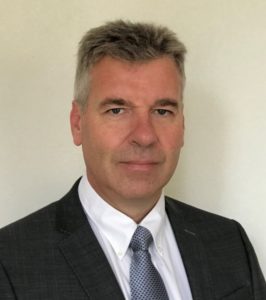DUBAI, UAE, 4 December 2019: Smart meters are the foundation of connected utilities, said Edwin Meijer, General Manager, Smart Energy EMEA, Honeywell, as he discussed the growing importance of data, and its proper management, in the future energy mix. “If you don’t measure, you cannot analyse,” Meijer said. “You need to connect smart meters, and […]

Edwin Meijer
DUBAI, UAE, 4 December 2019: Smart meters are the foundation of connected utilities, said Edwin Meijer, General Manager, Smart Energy EMEA, Honeywell, as he discussed the growing importance of data, and its proper management, in the future energy mix. “If you don’t measure, you cannot analyse,” Meijer said. “You need to connect smart meters, and the more you have, the more data you can connect.” Once smart meters are installed, the connection, or the network layer, Meijer said, is the middle layer and is the next important element in the move towards connected utilities, with stakeholders increasingly looking for flexibility and with telecom operators gaining strength in this arena. “The top layer is to store the data,” he said. “The data lake is where you have all these applications that will translate raw data into information that will help users to optimise operations, reduce cost and increase reliability. If the utility or the customer is not aware of what his problems are, we can help them. Because of our installed base we know what is working and is not working, and we can analyse the situation.”
Such data, he added, is especially useful for utility companies when it comes to tracking peaks and declines in consumption. “The data can be shown through apps for the user, so the user is not hit with a surprise when they get the bill.” For Meijer, real-time data can also help drive a change in behaviour by showcasing consequences of high-energy consuming systems, such as air conditioning, to move users towards better energy utilisation practices.
Meijer added that connected utilities and the use of smart meters will go a long way in managing the energy grid, which is continuously under pressure from the requirements of a growing number of consumers and the diversification of the energy mix, following the introduction of solar and wind energy. “If you have more production or consumers, your grid is overcharged, which is not good,” he said. “Then, what are you going to be doing with that energy? If you have more consumption, it is also not good. For example, a hospital should never run out of energy, so you need to set priorities. That whole grid management is becoming more and more important, that’s what we see.” This management, Meijer said, does not only take into account measurement from the meters but also external factors, such as ambient conditions and the general weather forecast. “There is a direct relation between the weather and air conditioning consumption,” he said. “You have that huge pool of data. By analysing the past, you can better the forecast the trend. You know it will happen, before it happens.” These, he said, are merely some of the examples of the benefits of smart data in connected utilities.
Meijer also highlighted the flexibility and scalability of the applications, which can be used by one big utility producer with many consumers or multiple utility suppliers with multiple consumers. “Maybe, in a few years, you have a solar panel in your roof and, in principle, you are a utility,” he said. “That is the potential you can supply to the grid. With that, the whole equation becomes very complex. It was already complex with all the consumers. Tomorrow, we could have unlimited utilities and, on top of that, exceptional growth of consumers, which means you need to manage that grid, that demand.” The data applications, he added, could also go a long way, especially in managing energy consumption of commercial and industrial facilities. “We can talk about how households can save in energy,” he said, “but that’s a fraction of what a plant or shop or mall can save.”
Copyright © 2006-2025 - CPI Industry. All rights reserved.